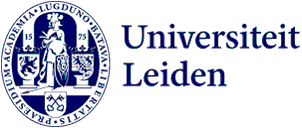Admission Requirements
Prior knowledge of Statistical Physics 1, Quantum Mechanics 2. It is to be expected that the student will take Quantum Mechanics 2 simultaneously. The topics of Fermi-Dirac and Bose-Einstein statistics, densities of states and the free electron gas are covered in Quantum Mechanics 2 before they are needed in Introdcution Solid State Physics.
Description
This course provides an introduction to Solid State Physics: the physics of matter in the solid state.
In this course, you will learn to understand the material world around you. Therefore, the course is (at this stage of the physics bachelor program) the most relevant physics course that is offered. First steps are taken towards the insight that you can find the universe in a grain of rust!
This subfield of condensed matter physics is both applied (e.g., in electronics) and fundamental.
Quantum mechanics and statistical physics come together in this field.
Specific topics are:
the heat capacity of solids
electrons in metals
structure of materials
geometry of solids (crystal lattices)
waves in crystals (the reciprocal lattice)
Finally, the course will connect in a qualitative way to modern topics of research in Solid State Physics,
that are often only partially understood: (high-temperature) superconductivity, metal-insulator transitions,
quantum Hall effects, topological matter.
Course objectives
On completing this course you will be able to perform calculations and derivations within a big variety of topics concerning the structure and properties of solids. You will be able to answer questions regarding these topics in your own words.
In particular, you will be able to apply these skills to the following topics:
why and how a classical description of atoms and electrons (Boltzmann, Drude theory) needs to be replaced by a quantummechanical description (Einstein/Debye, Sommerfeld theory)
why and how lattice vibrations (phonons) and electrons contribute to the heat capacity of materials
(three-dimensional) crystals in terms of lattices (unit cells) and reciprocal lattices (Brillouin zones)
waves in lattices and scattering of waves from lattices
electrons in a periodic potential (Bloch theorem, band structure, metal vs. insulator)
This course prepares you for the third year elective course The Electronic Structure of Solids.
Transferable Skills
You can put chains of arguments into writing
You plan your time in such a way that the study load is distributed evenly over the various study activities required for this course: studying the textbook, preparing problem sessions, completing exercises and assignments
Timetable
Schedule
For detailed information go to Timetable in Brightspace
In MyTimetable, you can find all course and programme schedules, allowing you to create your personal timetable. Activities for which you have enrolled via MyStudyMap will automatically appear in your timetable.
Additionally, you can easily link MyTimetable to a calendar app on your phone, and schedule changes will be automatically updated in your calendar. You can also choose to receive email notifications about schedule changes. You can enable notifications in Settings after logging in.
Questions? Watch the video, read the instructions, or contact the ISSC helpdesk.
Note: Joint Degree students from Leiden/Delft need to combine information from both the Leiden and Delft MyTimetables to see a complete schedule. This video explains how to do it.
Mode of instruction
See Brightspace
Lectures, problem sessions, homework.
N.B. The lectures will be in Dutch, but video lectures in English by the author of the textbook for the course are available. The exercises/problems are in English.
Assessment method
Written exam (closed book) with open questions. Proper participation in the problem sessions and handing in homework assignments can earn you a bonus of maximally 1 grade point on top of the exam grade.
Reading list
Textbook: The Oxford Solid State Basics – Steven H. Simon (Oxford University Press, 1st edition, 2013; reprint 2016) (mandatory), ISBN 978-0-19-968077-1 (Pbk.). This book is also used in the third year elective course The Electronic Structure of Solids
Registration
As a student, you are responsible for enrolling on time through MyStudyMap.
In this short video, you can see step-by-step how to enrol for courses in MyStudyMap.
Extensive information about the operation of MyStudyMap can be found here.
There are two enrolment periods per year:
Enrolment for the fall opens in July
Enrolment for the spring opens in December
See this page for more information about deadlines and enrolling for courses and exams.
Note:
It is mandatory to enrol for all activities of a course that you are going to follow.
Your enrolment is only complete when you submit your course planning in the ‘Ready for enrolment’ tab by clicking ‘Send’.
Not being enrolled for an exam/resit means that you are not allowed to participate in the exam/resit.
Contact
Contact Details Lecturer:Prof.dr.ir. T.H. Oosterkamp
Remarks
Software
Starting from the 2024/2025 academic year, the Faculty of Science will use the software distribution platform Academic Software. Through this platform, you can access the software needed for specific courses in your studies. For some software, your laptop must meet certain system requirements, which will be specified with the software. It is important to install the software before the start of the course. More information about the laptop requirements can be found on the student website.
